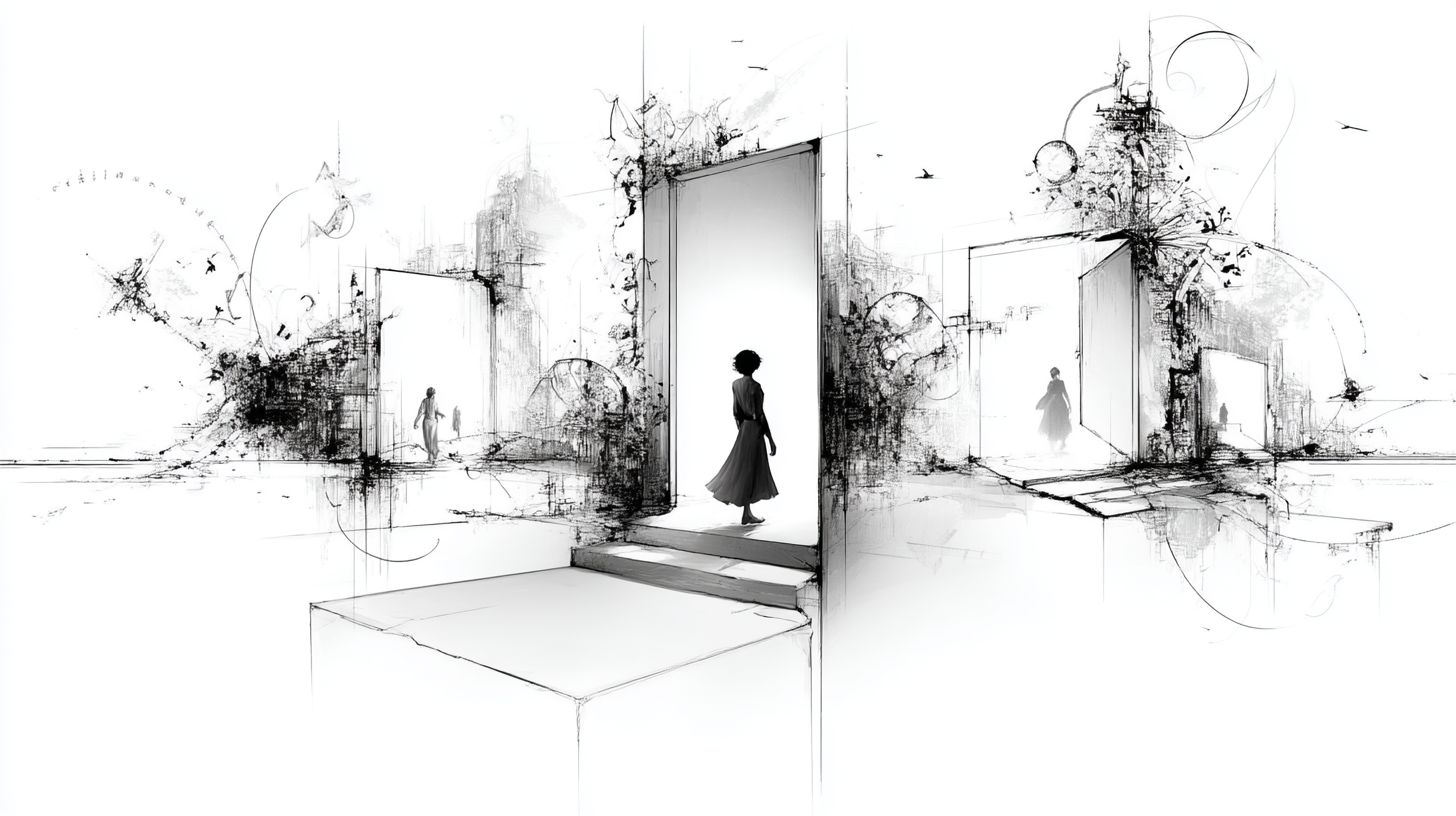
Perception | Context-Dependent Memory
THE THOUGHT
This moment feels like the beginning of everything. Yet, I am stuck at the end of something.
I stand in my kitchen. It is dark outside and I catch a glimpse of snow falling at the window. The house is still quiet. The coffee brews. I came here looking for something but I cannot remember what. So I stand by the threshold. Suspended. Annoyed.
I lose a memory from time to time. First I worry: is my brain failing? Should I be concerned? Then I remember: I have worried about this before. In this exact same place. I know what I need to do next.
I retrace my steps to my office, the room where the thought began. I stand in the exact spot. Slowly start doing what I was doing. And instantly, I remember. Ripley. I was going to feed our cat.
It works for glasses. Water bottles. Books left upstairs. The memory is never lost. It lingers in the room where it started.
Have you lost a thought at a doorway?
The true art of memory is the art of attention.
THE DIVE
The Situational Self
“I know that person.” You think it at a concert, staring at a familiar face. But you cannot recall his name, his role, where you know him from. He is your dentist and in your brain, he exists only in the dental office.
This is context-dependent memory. Information gets bound to where you learn it. Your brain encodes memories alongside environmental cues. The room, the light, the smell. When those cues reappear, memory improves. Without them, the memory stays locked.
We evolved to survive environments, not store abstract facts. Your brain uses context as a filing system. It does not separate memory from place. The place is part of the memory.
In a classic demonstration from 1975, psychologists Godden and Baddeley tested scuba divers. Some memorized word lists underwater. Others on dry land. Then they recalled in matching or mismatched environments. Divers who learned underwater recalled 50% more words when tested underwater. Those who learned on land performed better on land. The surrounding world had become part of the memory itself.
This is why you blank when you walk through a doorway. Psychologists call it the doorway effect. The brain treats doorways as event boundaries. It files the previous thought under "previous room." Cross the threshold, lose the thought. Walk back through, retrieve it instantly.
Or why exams make your mind go empty even though you knew the material. You studied at the coffee shop. All that information got filed under coffee shop cues. The fluorescent classroom offers no retrieval pathway.
Cognitive psychologist Endel Tulving called this encoding specificity. A memory is stored with its context. Contextual cues become retrieval pathways. Change the context, lose the pathway.
The pattern extends beyond physical space. State-dependent memory works the same way. Mice trained under morphine recall better under morphine. People who learn while happy remember more when tested happy. Your internal state becomes part of the filing system too.
Context then, shapes not just what you remember but who you are. Your office holds the version of you who executes. Your parents' house holds the teenager. Your best friend's couch holds a self that nowhere else knows.
There is a you that only exists in certain rooms.
THE SHIFT
The Mental Return
If context shapes memory and identity, then environment can become a psychological tool. A way to access, change, or reinforce parts of yourself.
This week, try context reinstatement: the deliberate mental reconstruction of the environment where a memory was formed. In its simplest form, it helps you remember you were about to feed your cat. But it can do more.
When you cannot recall a name, a detail, a decision, pause. Close your eyes and rebuild the scene in your mind. Where were you sitting? What could you hear? What were you wearing? Who else was there? Move through the space slowly, object by object.
Specificity matters. The temperature of the coffee. The pattern on the chair. The colour of the mug.
The more sensory detail you reconstruct, the more retrieval pathways you activate. Memory champions use this principle to build memory palaces. They place information in imagined rooms, then walk through those rooms to retrieve it.
The reverse method also works. When learning something you will need later, deliberately vary your contexts. Study in different rooms. Review while walking. Teach the material to someone in a different location. Each new context creates another doorway into the memory.
The shift is subtle. Start treating memory as a system that responds to the world around you. Context is not distraction. It is the system.
What will you find if you return to the room that holds a memory?
THE THOUGHT COLLECTION
Objects for Presence
Items designed to anchor memories and mark spaces. Physical cues that remind you which room holds which version of yourself.
NOTEWORTHY
Curated Resources On Context-Dependent Memory
Read: Why We Remember by Charan Ranganath — A neuroscientist reveals how memory works as mental time travel, shaping identity and guiding future decisions.
Listen: Remember More, Forget Less from Hidden Brain — Cognitive scientist Daniel Willingham explains why memory fails and how to build recall that sticks.
Watch: How Reliable Is Your Memory? by Elizabeth Loftus — A renowned psychologist shows how context and suggestion reshape what we think we remember.
This publication is a space for exploration and reflection. Nothing in this email is medical, psychological, or therapeutic advice. These ideas are general insights on human behaviour, not treatment or diagnosis. Each reader’s situation is unique and deserves the right kind of support. If you are struggling or in crisis, please contact a licensed mental health professional.

